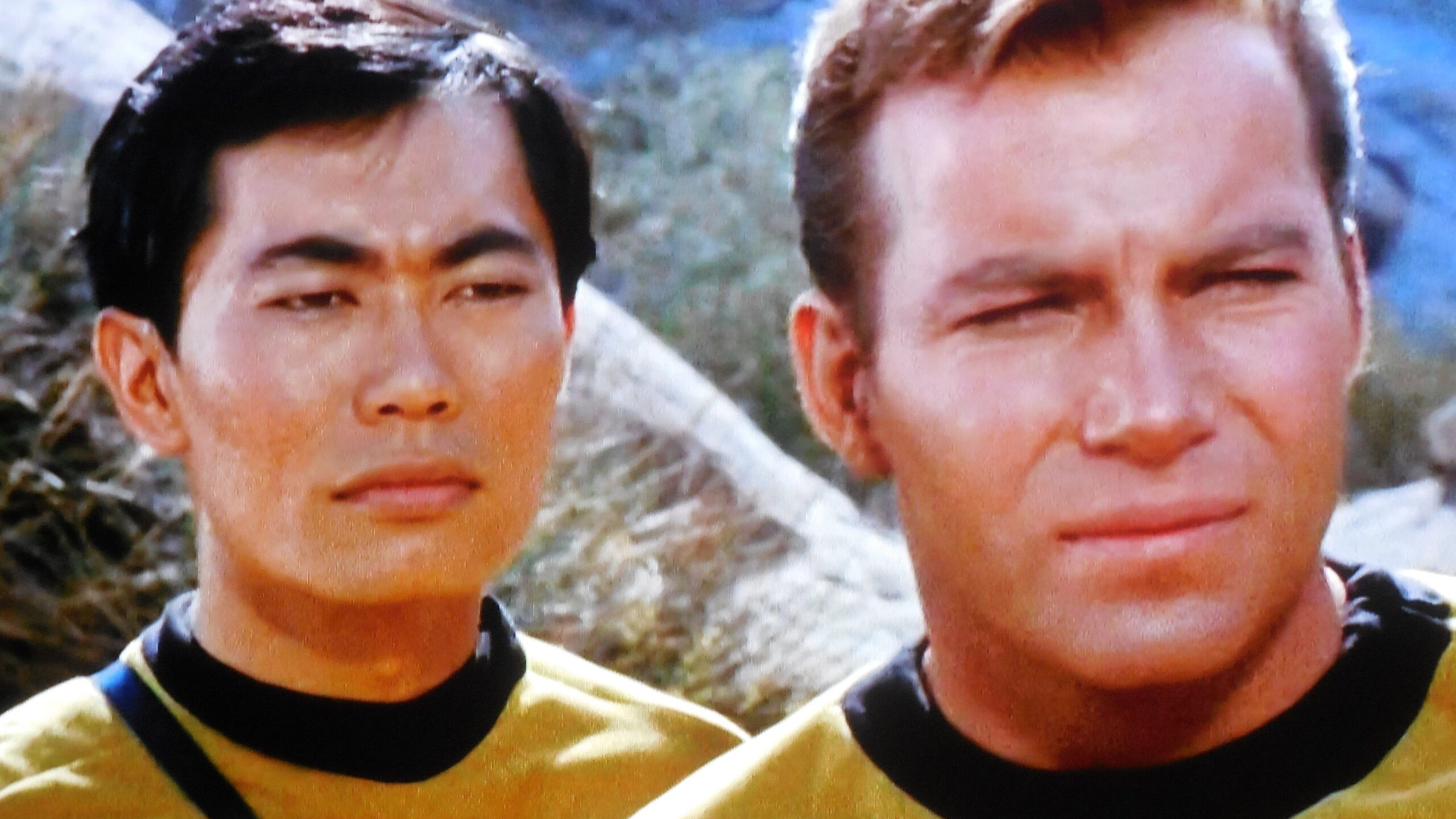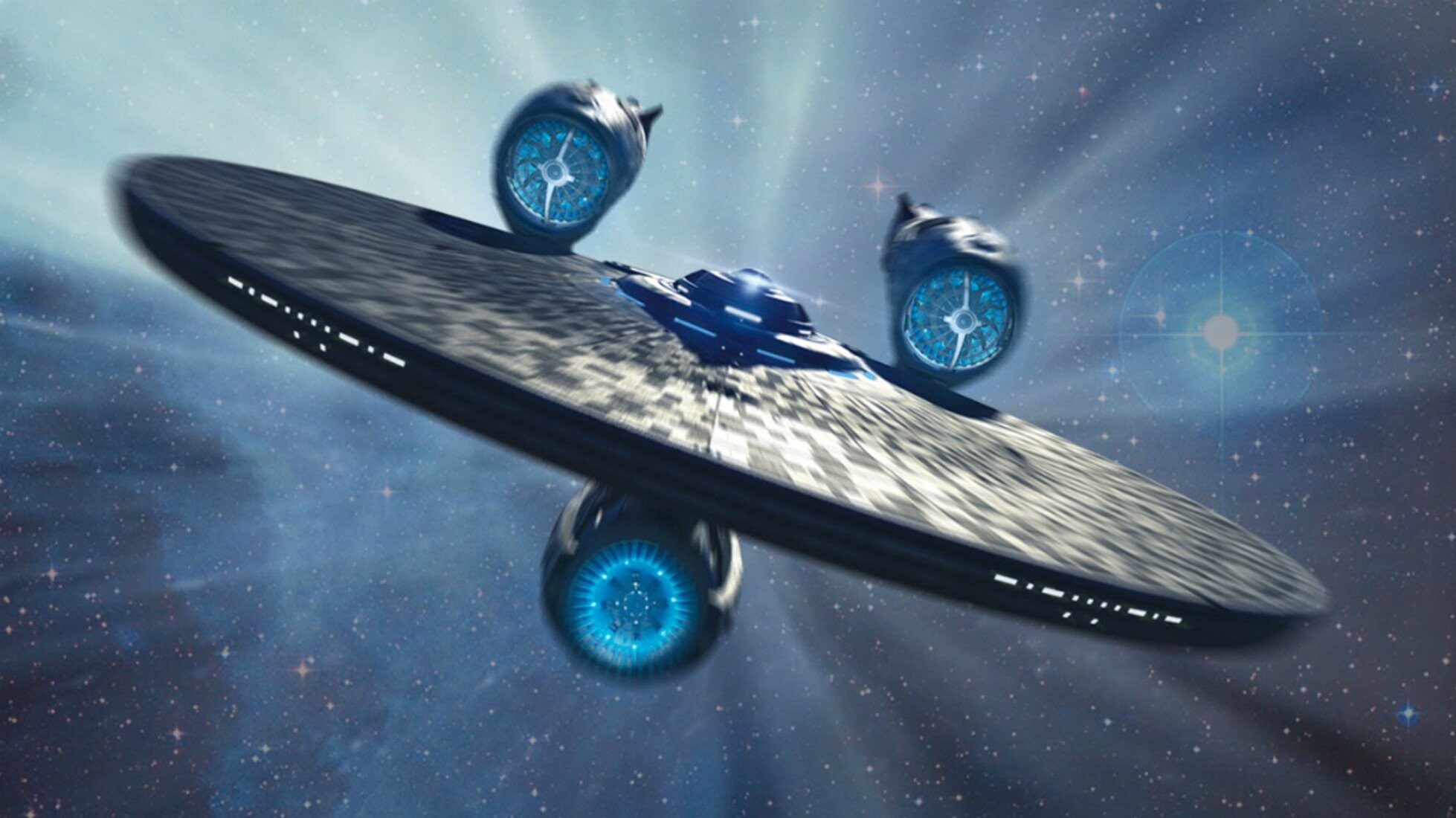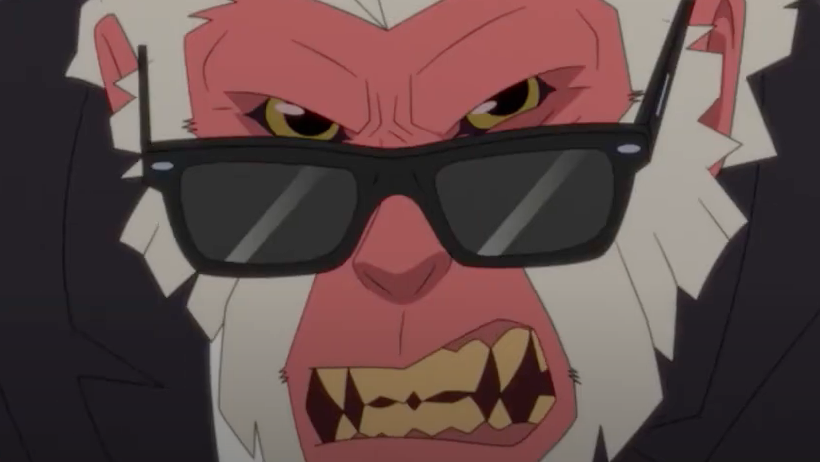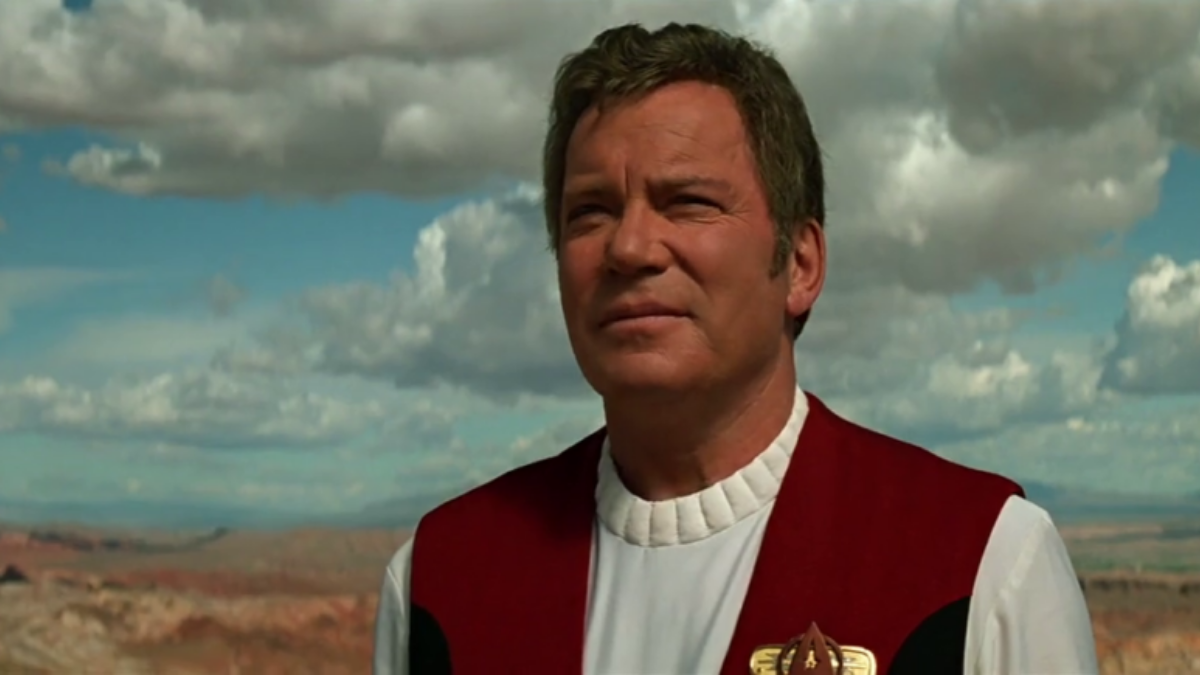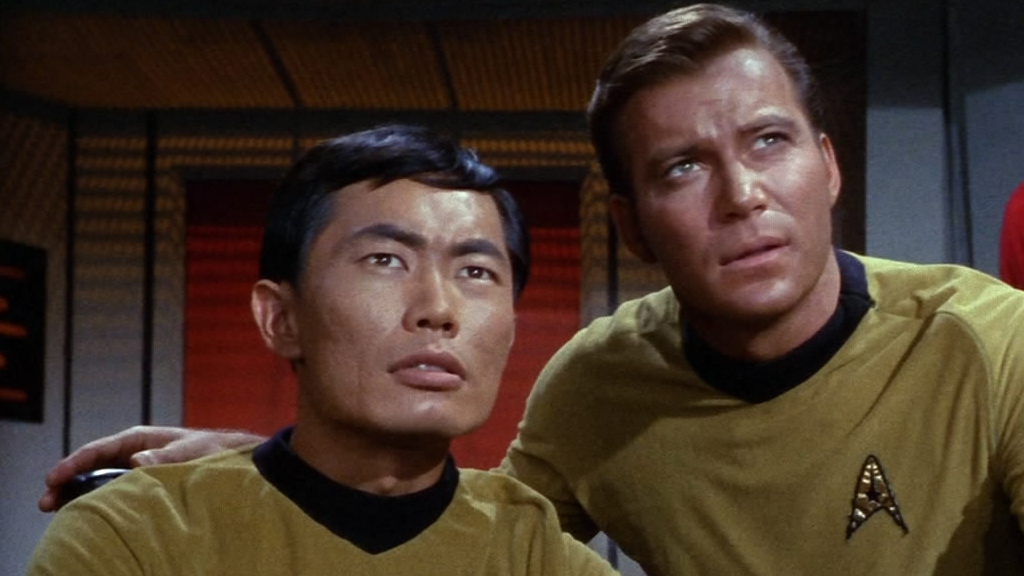George Takei
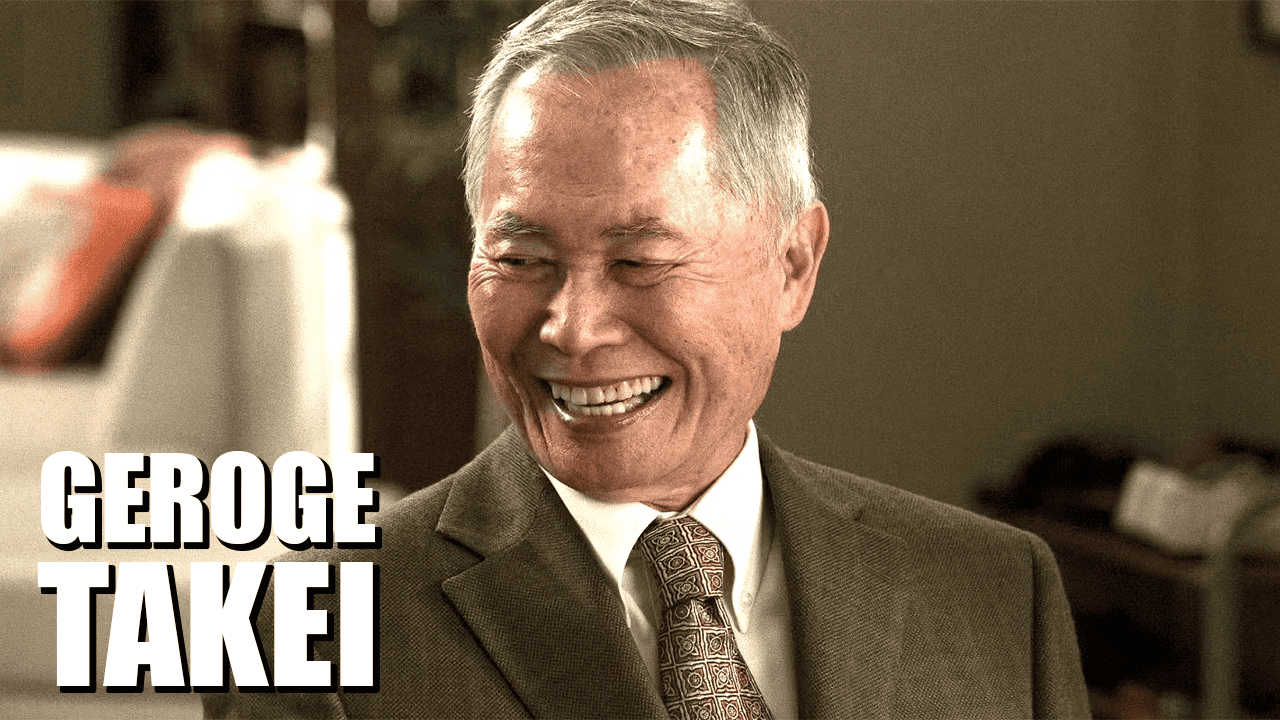
Oh my. George Takei, whose career began almost seven decades ago, is best known for playing Lieutenant Hikaru Sulu on the original Star Trek series as well as the six Star Trek films which starred the original series cast. Then again, he may be better known for the bitter feud he has had going on with his former Star Trek co-star, William Shatner, for the better part of his career.
GEORGE TAKEI SPENT PART OF HIS EARLY LIFE IN INTERNMENT CAMPS
George Takei was born Hosato Takei on April 20, 1937, in Los Angeles, California. It was his father, Takekuma Takei, a real estate agent, who named him George after King George VI. The latter’s coronation took place shortly after George was born. But like many Japanese Americans of that time, life was about to change drastically for George and his family.
George Takei was only 5 years old when Executive Order 9066 was signed. This EO was the Relocation of Japanese order that President Franklin Roosevelt issued on February 19, 1942, as a result of the Japanese bombing of Pearl Harbor on December 7, 1941. The Takeis went from living a normal life in California to being removed from their home and sent to the converted horse stables at Santa Anita Park.
The Takeis didn’t live for long at the racetrack before they were moved to the Rohwer War Relocation Center in Rohwer, Arkansas. The internment center was built in an Arkansas swampland and surrounded by barbed wire, making escape an unwise choice. George Takei lived with his family there for some time before they were all transferred to the Tule Lake War Relocation Center, bringing them back to California.
In a 2017 interview with Salon, George Takei described what life was like for him, his family, and all of those inside the internment camps. He said, “…right after the bombing of Pearl Harbor — we’re Americans of Japanese ancestry, my mother was born in Sacramento, my father was a San Franciscan. They met and married here in Los Angeles, and my brother, and sister and I were born here. We’re Americans. But suddenly we were looked at with suspicion, and fear and outright hatred, simply because of our ancestry.”
He then spoke about the attorney general of California who, at that time, decided to make it political because he had wanted to run for governor of California. “This attorney general who knows the Constitution decided he’s going to get in front of that issue to enhance his candidacy for governor. He made an amazing statement. The attorney general of California said that they had no reports of spying or sabotage or fifth-column activities by Japanese-Americans. And that is ominous, because the Japanese are inscrutable . . . We don’t know what they’re thinking. So, it would be prudent to lock them up before they do anything.”
Takei went on to explain how this man went about advocating the locking up of Japanese Americans without any charges, trials, or due process, all because he felt the Japanese “inscrutable.” This man, who was Earl Warren, won the governorship and was re-elected twice afterward. It was a sad period of adjustment for those locked away.
“He [Warren] ignited this grass fire all across the country and got the president of the United States to sign an executive order ordering all Japanese-Americans on the West Coast — approximately 120,000 of us — to be rounded up and placed in ten barbed wire prison camps, in one of the most hellish desolate places in the country: the blistering hot desert of Arizona, the humid swamps of Arkansas, or the desolate wasteland of Wyoming, Idaho, Utah, Colorado and two of the most desolate places in California.”
As for life in the camps, Takei says, “…my father was a block manager in both camps that we were in. We were first taken to a camp in the swamps of Arkansas called Rohwer. Then after a year and a half transferred to another camp in Northern California called Tule Lake. It was my father that told me when I was a teenager and curious about internment. He said, ‘Fortitude and resilience isn’t all teeth-gritting, bone-biting strength. It’s also the strength to be human, to see beauty under harsh condition and to find joy, fun.'”
Takei went on, “Our barracks in the Arkansas camp was just across from the mess hall, and every couple of months the camp authorities allowed the teenagers to stage their dances after dinner. After dinner, the tables were cleared out and benches were brought to the side of the mess hall, and the teenagers had their dance.”
He also explained how his father made the most out of where they were. “My father organized a baseball team. We were next to the undeveloped part of the camp and so he got volunteers and he built a baseball playing field, a diamond. I remember seeing baseball games there.”
GEORGE TAKEI LOST FAMILY IN THE BOMBING OF HIROSHIMA
While the Takei’s were doing their best in these relocation centers, they still had family who lived in Japan. Among those family members, George had an aunt and baby cousin who lived in Hiroshima. Sadly, they were both killed when the United States dropped the atomic bomb on the city. In 2016, Takei countered then-President Trump’s call for increased U.S. nuclear capability when he took to Twitter to denounce Trump’s words.
“Trump wants to expand our nuclear arsenal. I think of my aunt and baby cousin, found burnt in a ditch in Hiroshima. These weapons must go,” Takei wrote on his Twitter account.
The dropping of the atomic bombs was just one more instance of the horrors that World War II wrought as thousands were killed immediately on August 6, 1945, and by the end of the year, over 140,000 had perished from the bomb.
When WWII finally ended in 1945, the Takeis were released from the Tule Lake War Relocation Center and allowed to go back to Los Angeles. Upon their return, though, they found out they no longer had a home, they had no family business, and their bank accounts were gone (along with all their money), so they were unable to find any housing. As a result, George Takei and his family had to live on Skid Row in Los Angeles for five years.
ACTING WAS NOT HIS PASSION EARLY IN LIFE
Things thankfully and eventually got better for George Takei’s family. He attended Mount Vernon Jr. High School and then Los Angeles High School.
Acting was not on his radar when he graduated high school. Instead, George enrolled in the University of California, Berkeley, where he majored in architecture.
“I had studied to be an architect. I was an architecture student at UC Berkeley,” Takei said in 2017. “But an architect speaking at architecture forums or at universities wouldn’t reach as many people as an actor’s voice does — particularly, an actor whose career is strongly related to a show like “Star Trek,” which has grown in popularity over 52 years.”
So, instead of finishing out at UC Berkeley and becoming an architect, George Takei transferred to the University of California, Los Angeles where he studied theater. There he received his Bachelor of Arts in 1960, but he wasn’t done. He stuck around and got his Master of Arts in theater in 1964.
To complete his studies, George Takei also attended the Shakespeare Institute at Stratford-upon-Avon in England and also Tokyo’s Sophia University. Now knowing exactly what he wanted to do for his career, George headed back to Los Angeles where he studied acting at the Desilu Workshop in Hollywood.
This workshop fell under Desilu Productions, the company owned and run by married actors Desi Arnaz, Jr. and Lucille Ball, who gained their fame in the hit comedy series, I Love Lucy.
GEORGE TAKEI BROKE INTO SHOW BUSINESS WITH SMALLER ROLES IN THE LATE 50s AND EARLY 60s
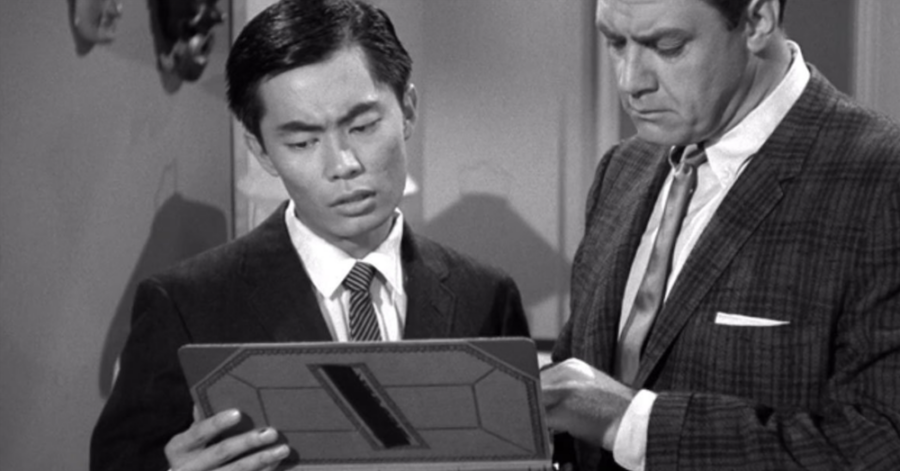
George Takei’s first taste in the movie business came in 1955 and it was a role where he was only heard and not seen. He provided a voice for the English dubbing of Godzilla Raids Again. The following year, he would provide the same for the film Rodan.
Eventually, George Takei would get his first shot in front of the camera, although it wouldn’t come for another three years, in 1959, when he appeared in an episode of Playhouse 90. In fact, 1959 would see George jump onto the small screen with appearances on The Californians and Perry Mason. He would also appear in the films Battle of the Coral Sea and Never So Few.
1960 saw George Takei star in two feature films, Ice Palace and Hell to Eternity, along with an episode on Assignment: Underwater, The Islanders, and Hawaiian Eye. George would continue on in 1961 with another couple of episodes on The Islanders and Hawaiian Eye and add the film A Majority of One to his resume as well.
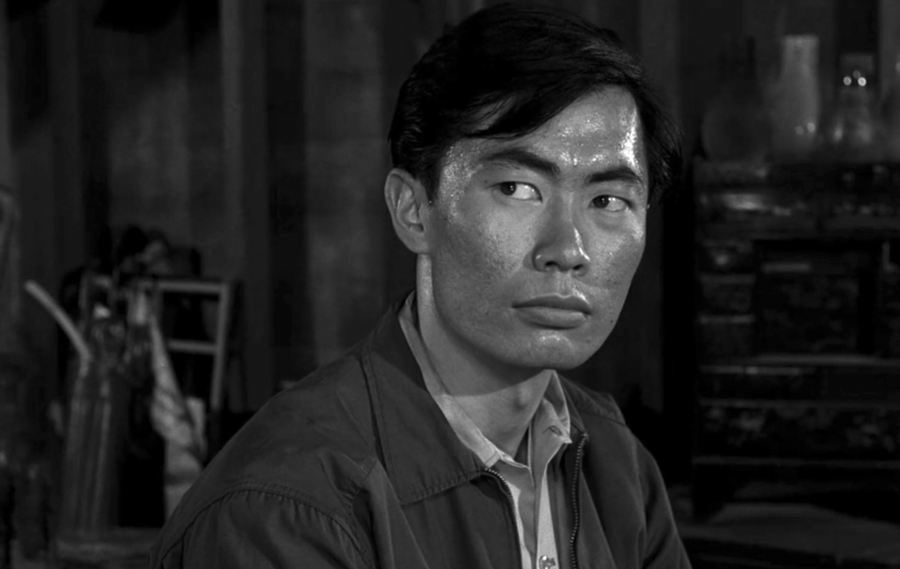
The early to mid-‘60s saw George Takei bounce back and forth from popular TV series to feature films. He got time on series such as The United States Steel Hour, The Eleventh Hour, The Gallant Man, The Twilight Zone, Death Valley Days, Voyage to the Bottom of the Sea, Mister Roberts, My Three Sons, I Spy, and The Wackiest Ship in the Army.
As far as films go, George was seen in PT 109, Morituri, Red Line 7000, and Walk Don’t Run. All of this was leading up to the most iconic role of his career.
GEORGE TAKEI IS SULU ON STAR TREK
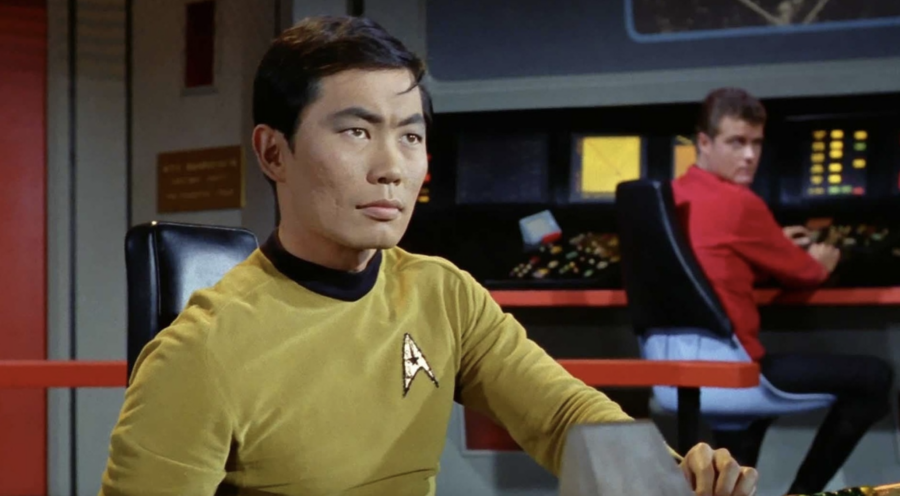
When Star Trek got the green light for its first pilot, The Cage, George Takei was nowhere to be seen. In fact, of all the original Star Trek cast members, only one from the first pilot survived to make the second pilot and return to star in the remainder of the series – Leonard Nimoy.
The first Star Trek pilot starred Jeffrey Hunter as Captain Christopher Pike, Nimoy was on as Spock, Majel Barrett played Number One, John Hoyt as Dr. Phillip Boyce, and Susan Oliver played Vina.
For a number of different reasons, the NBC network rejected the pilot and in a move unheard of at the time, they ordered another pilot in its place. This would become the second pilot and be titled Where No Man Has Gone Before.
Jeffrey Hunter had the option to return as Captain Pike but declined to come back. In his place, William Shatner was hired to become Captain James Tiberius Kirk and Leonard Nimoy was brought back as Spock.
The remaining crew from the first pilot did not return, but in their place was James Doohan as Chief Engineer Montgomery Scott and George Takei, who beamed aboard as Hikaru Sulu, the USS Enterprise’s physicist. Sulu would not hold that position for long, as the series got picked up, and his job title was changed to helmsman.
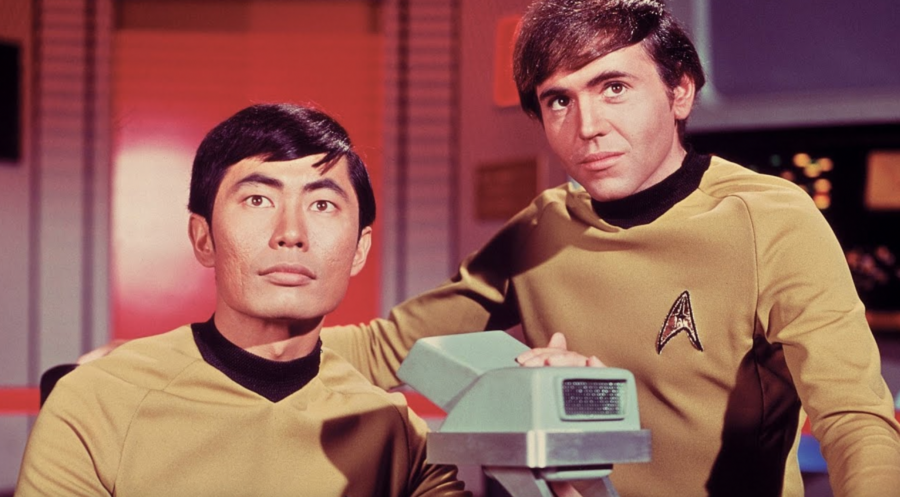
The second season of Star Trek was intended to give George Takei and Sulu much more airtime, but unfortunately, that was not to be the case. See, George had grabbed a role in the John Wayne film, The Green Berets, so it took him away from a lot of Season 2’s filming. Instead of Sulu getting more play, the time went to Walter Koenig, whose Pavel Chekov joined the series for the second season.
According to George, when he finally did return to the set of Star Trek, he ended up having to share a dressing room with Koenig, along with a single script. George also admitted that at the time of their first few episodes together, he felt threatened by Koenig’s presence, seeing as how Koenig was getting more screen time than Takei. Eventually, though, the pair became great friends.
Star Trek would only last three seasons and it wouldn’t become the juggernaut it is today for a few years when the series went into reruns. It was then that it became truly popular, which led to the Star Trek Animated Series. That saw all of the main cast return to voice their parts, and of course, the Star Trek film franchise, which saw the entire cast, including George Takei, return to their original roles as well.
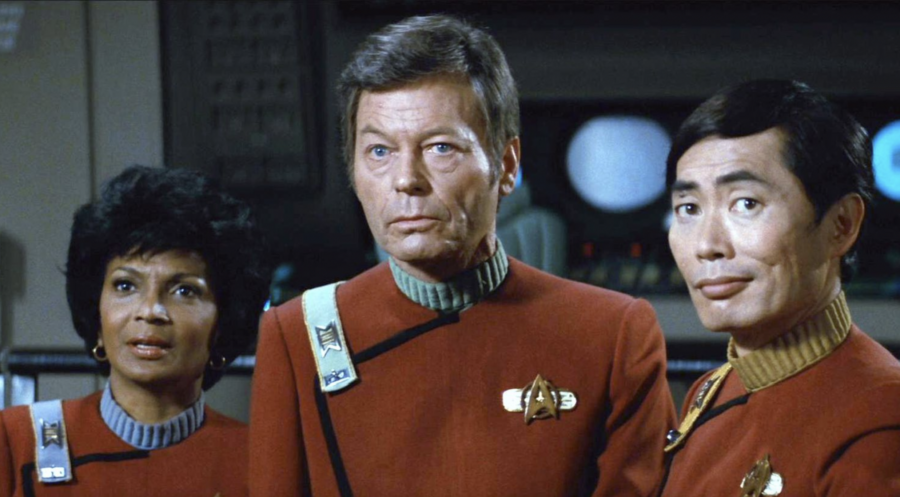
There were six Star Trek films in which the original series cast starred. These were Star Trek: The Motion Picture, Star Trek II: The Wrath of Khan (which is routinely considered the absolute best in the series), Star Trek III: The Search for Spock, Star Trek IV: The Voyage Home (which is oft considered the most fun film of the bunch), Star Trek V: The Final Frontier, and Star Trek VI: The Undiscovered Country.
Little did most fans know, but throughout the entire three-season run of the original series and the dozen or so years it took to complete the original series casts feature films, there was one particular actor with whom George Takei had a bone to pick and it was one that he has not let up on to this day.
GEORGE TAKEI HATES WILLIAM SHATNER
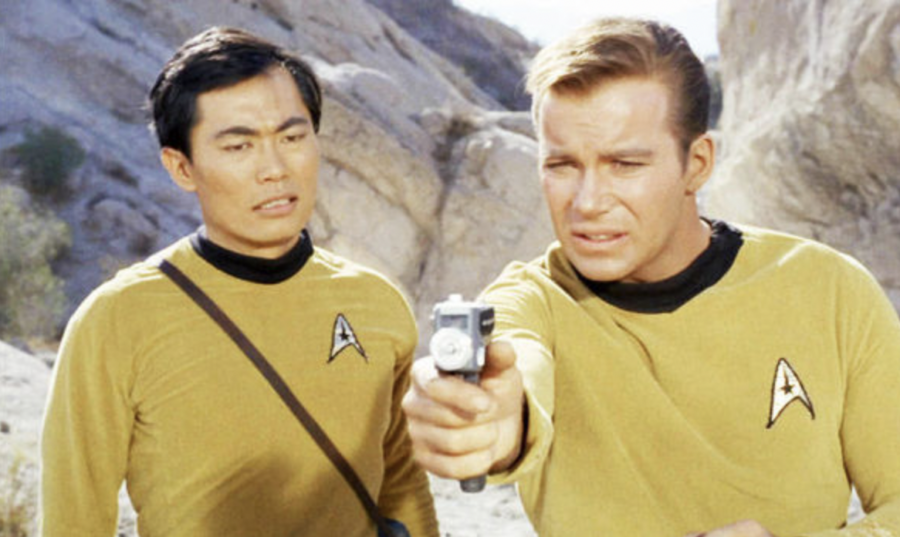
As the feud between George Takei and William Shatner began to unveil itself, it appeared that it was a wedding invitation snub that started the whole messy and juvenile affair.
As more came out, though, about the tiff between the two men, it became apparent that the dislike between Takei and Shatner started way back when the original series was being filmed. George has since made that point perfectly clear.
From George Takei’s point of view, William Shatner was a “prima donna” on the set of Star Trek, and not one of the original series cast members got along with him. Most agree that Shatner’s issues stemmed from Leonard Nimoy starting to become more popular and receiving more fan mail than the supposed star of the show. Jealousy and insecurity fueled his attitude on set, which obviously rubbed the rest of the cast the wrong way.
Somehow, all of these feelings towards each other were cast aside as the six films in the franchise were made. There weren’t any headlines made over the dozen or so years, though there was one incident that both recalled. It happened during the filming of the Wrath of Khan.
As Shatner recalls, there was a fire on the set that moved the actors into immediate action. “…[W]hile we waited for the fire department, I remember I was so desperate that nothing be harmed that I ran in with a garden hose, and I started to hose the fire down.”
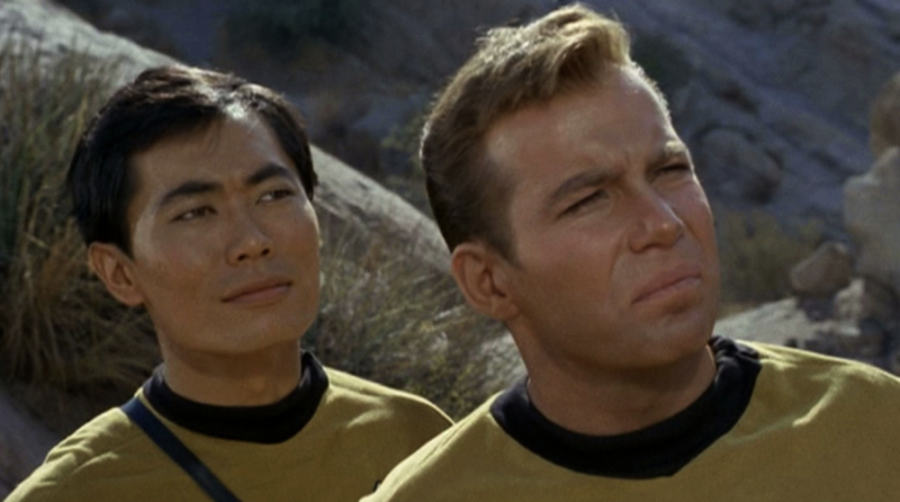
Of course, George Takei has a vastly different take on that same incident. In his autobiographical book, To the Stars: The Autobiography of George Takei, Star Trek’s Mr. Sulu, George claims that William Shatner grabbing a hose was nothing more than a publicity stunt. He even goes on further to make the claim that Shatner wasn’t even on the set when the fire broke out and instead someone from Paramount’s publicity department ran over to Shatner’s trailer to get him and escort him to the fire.
As time went on, the two began to take more and more public shots at each other. Things got even worse when George Takei got married. George had come out as gay (we’ll get into that in a bit) and in 2008, was set to marry his longtime partner, Brad Altman.
According to Shatner, he never got an invitation to the wedding, although the rest of the Star Trek cast did. Of course, George doesn’t see it the same.
“It is absolutely baffling to us because, in fact, we did invite Bill and we didn’t hear from him,” George explained to PEOPLE. “But it wasn’t surprising because it’s true to his history. He’s never responded to an invitation.” This would only be the beginning.
Since that time, the two have been playing tennis with their barbs. One would make a statement about the other, forcing the other to return the volley. All of this, though, has been questioned in the past, with some claiming the whole “feud” is just being staged.
Many point to the 2006 Comedy Central Roast of William Shatner where George Takei was one of the celebrities roasting Shatner. They traded fun banter and even embraced during the show. Takei noted during the roasting that despite the past tension between the two stars, he felt honored to be there.
For the most part, though, fans seem to be leaning on the side of the feud being real and the two have not given Trekkies any reason to think otherwise. They both continue to toss nasties at each other through the media and it doesn’t look like it will be ending anytime soon, even at their advanced age.
Most recently, George Takei called Shatner a “cantankerous old man” and berated him for Shatner’s trip into space on Jeff Bezos’ Blue Origin saying, “So 90-years-old is going to show a great deal more on the wear and tear on the human body, so he’ll be a good specimen to study,” he joked. “He’s boldly going where other people have gone before.”
For Shatner’s part, he shot back at Takei’s swipe by telling The Times UK, “I began to understand that they were doing it for publicity. Sixty years after some incident they are still on that track. Don’t you think that’s a little weird? It’s like a sickness.”
Shatner didn’t stop there, “George has never stopped blackening my name. These people are bitter and embittered. I have run out of patience with them. Why give credence to people consumed by envy and hate?”
GEORGE TAKEI DIDN’T COME OUT AS GAY UNTIL 2005 BECAUSE HE THOUGHT IT WOULD HURT HIS CAREER
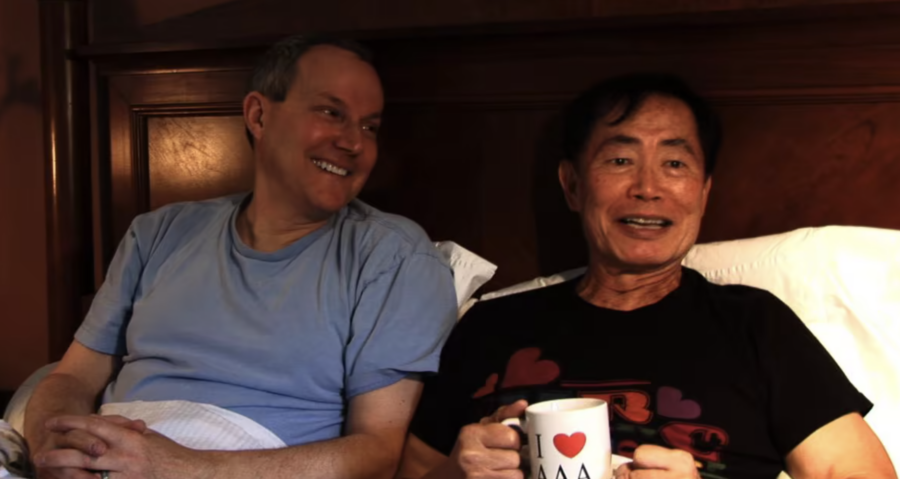
By the time George Takei finally and publicly came out as gay in 2005, he had already been in an 18-year relationship with his husband, Brad Altman. His timing on this centered specifically around then-California Governor Arnold Schwarzenegger’s decision to veto a bill that would have legalized gay marriage in the Golden State. This, obviously, was a decision that did not sit well with Takei, though he first addressed what took him so long to come out.
“Why did it take me so long to come out?” Takei said to Variety. “Because I’m an actor and I wanted to work. I learned at a young age that you couldn’t be an openly gay actor and hope to be employed. And I was already an Asian-American actor, so I was already limited a lot. To this day, there are big Hollywood actors who are not out in order to protect their careers.”
“I was closeted for a long period of my career,” Takei continued. “I was silent during the AIDS crisis, which fills me with guilt, although I did write checks and checks to AIDS organizations. Why did I come out when I did? Because Schwarzenegger presented himself as a movie star who had worked and was friends with gays and lesbians, many of whom voted for him, but then vetoed that bill. I was so angry that I spoke to the press for the first time as a gay man at the age of 68.”
When George and Brad applied for their marriage license in 2008, they became the very first same-sex couple to apply for one in West Hollywood. The marriage ceremony took place at the Democracy Forum of the Japanese American National Museum in Los Angeles on September 14, 2008. George Takei had Walter Koenig as his best man and instead of having a maid of honor, they had Nichelle Nichols as their “best woman.”
George Takei made news earlier in 2007 when former basketball player, Tim Hardaway, went on the Dan Le Batard radio show with his infamous rant: “You know, I hate gay people, so I let it be known,” Hardaway said. “I don’t like gay people and I don’t like to be around gay people. I am homophobic. I don’t like it. It shouldn’t be in the world or in the United States.”
When Hardaway was asked how he would deal with a gay teammate, Hardaway said at the time, “First of all, I wouldn’t want him on my team. And second of all, if he was on my team, I would, you know, really distance myself from him because, uh, I don’t think that’s right. And you know I don’t think he should be in the locker room while we’re in the locker room. I wouldn’t even be a part of that.”
Takei was not going to be quiet about Hardaway’s comments. In fact, he went so far as to film a PSA, that was aired on Jimmy Kimmel Live! The PSA begins with a serious tone to it as George first read Hardaway’s hateful words, then said of himself, “As a gay man and a human being, I was shocked and saddened. But I want you to know, Tim, on behalf of gay people everywhere, that despite your ugly words, we don’t hate you. As a matter of fact, we like you.” Then, George’s voice takes an ominous turn when he says, “We like you very much.”
The PSA then turns from serious to comedy as George, now standing next to a picture of Tim Hardaway, says, “We particularly like your large, powerful calves,” as he is rubbing them. After he pauses with his hand right around Hardaway’s crotch, he then puts his hand on Hardaway’s head, saying, “Your smooth, chocolatey head, glazed in man sweat.”
Then, George finishes, making his point perfectly known by telling Tim Hardaway, “And let it be known, one day, when you least expect it, I will have sex with you.”
Hardaway eventually did apologize for his words. “As an African-American, I know all too well the negative thoughts and feelings hatred and bigotry cause,” Hardaway said in a statement issued by his agent at the time. “I regret and apologize for the statements that I made that have certainly caused the same kinds of feelings and reactions.
“I especially apologize to my fans, friends, and family in Miami and Chicago. I am committed to examining my feelings and will recognize, appreciate and respect the differences among people in our society,” he said. “I regret any embarrassment I have caused the league on the eve of one of their greatest annual events.”
HE WAS ACCUSED OF SEXUAL MISCONDUCT BUT WAS VINDICATED
George Takei’s issue with Tim Hardaway has not been the only one he has had to deal with since he came out as gay. There was also another incident that came to light in 2017. Former actor and model, Scott R. Brunton, went to The Hollywood Reporter with a story claiming that in 1981, he was drugged and groped in Takei’s condo when Brunton was a young 23-year-old.
“This happened a long time ago, but I have never forgotten it,” Brunton told THR. “It is one of those stories you tell with a group of people when people are recounting bizarre instances in their lives; this always comes up. I have been telling it for years, but I am suddenly very nervous telling it.”
As Brunton explained the situation, he says that he met Takei when Brunton was working as a waiter while also trying to nail down some acting and modeling gigs. The two ran into each other a couple of times after the initial meeting and when Brunton told Takei that he broke up with his boyfriend, Takei asked for his phone number. Not long after Brunton gave it to him, Brunton got a call from George.
According to Brunton, Takei invited him over to his place and they had a few drinks. Brunton then describes that he began to feel “very disoriented and dizzy.” He says he must have passed out on a large yellow bean bag chair.
“The next thing I remember,” Brunton said, “I was coming to and he had my pants down around my ankles and he was groping my crotch and trying to get my underwear off and feeling me up at the same time, trying to get his hands down my underwear. I came to and said, ‘What are you doing?!’ I said, ‘I don’t want to do this.’ He goes, ‘You need to relax. I am just trying to make you comfortable. Get comfortable.’ And I said, ‘No. I don’t want to do this.'”
Brunton continued, “I pushed him off and he said, ‘O.K., fine.’ And I said I am going to go and he said, ‘If you feel you must. You’re in no condition to drive.’ I said, ‘I don’t care, I want to go.’ So I managed to get my pants up and compose myself and I was just shocked. I walked out and went to my car until I felt well enough to drive home, and that was that.”
George Takei was at a loss. He took to his Twitter account to deny any and all allegations, saying, “I have wracked my brain to ask if I remember Mr. Brunton, and I cannot say I do. Non-consensual acts are so antithetical to my values and my practices, the very idea that someone would accuse me of this is quite personally painful.”
Apparently, Takei couldn’t recall any of this incident because it never happened. Almost half a year later, Brunton came forward saying the incident, or key moments of it never happened. He walked back his story, first saying it was a great “party story,” but he couldn’t remember George ever touching his genitalia.
George, taking the high road, said that he forgave Brunton for the false accusations and “despite what he has put us through, I do not bear Mr. Brunton any ill will, and I wish him peace.”
GEORGE TAKEI APPEARED ON MANY SERIES OUTSIDE OF STAR TREK
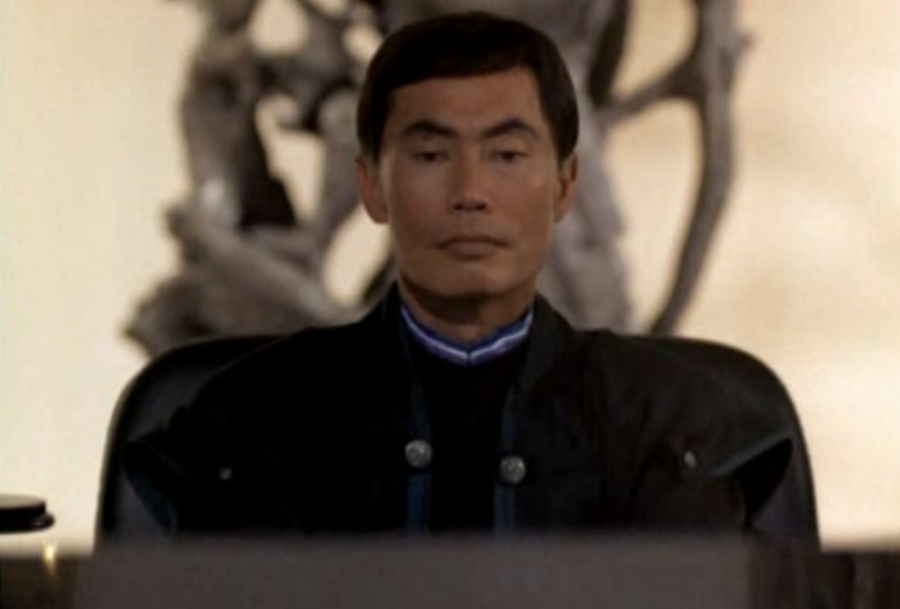
Although George Takei’s claim to fame will always be Hikaru Sulu, he has done plenty more than just Star Trek. During the ‘70s, George hit just about every popular TV series, showing up on episodes like Ironside, The Six Million Dollar Man, Hawaii Five-O, Chico and the Man, Black Sheep Squadron, and Vega$.
The ‘80s were just as good to George, as he appeared on Matt Houston, General Hospital, Blacke’s Magic, MacGyver, Murder, She Wrote, and Miami Vice.
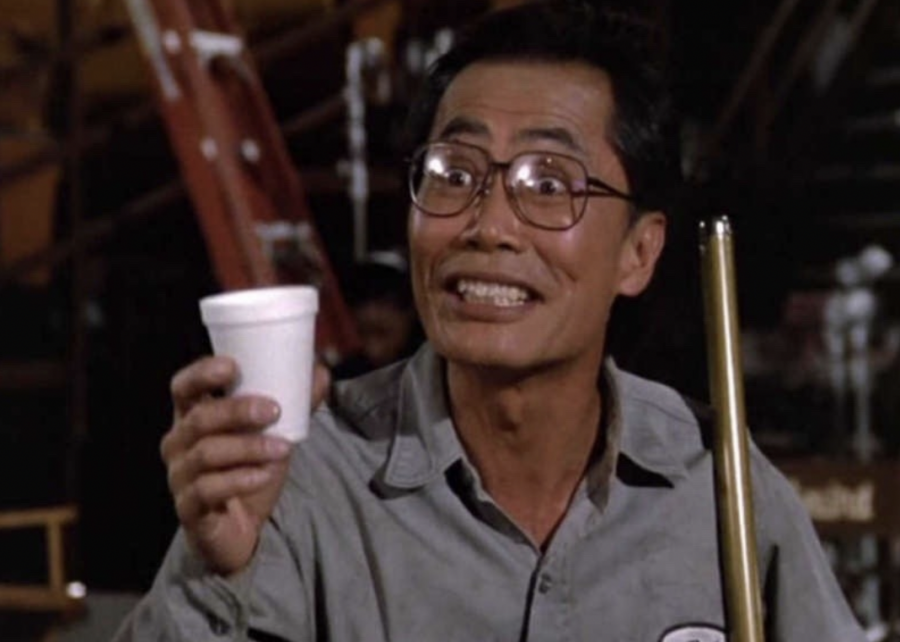
A lot of George Takei’s work took place in the 1990s. It was a very active time for George, as he was involved in over 35 projects throughout the decade. The one thing that George was becoming more adept at doing was voice roles, whether it be on animated series or even video games.
Throughout the decade of the ‘90s, George Takei could be heard in animated series and films like Spider-Man: The Animated Series, The Magic Pearl, Happily Ever After: Fairy Tales for Every Child, Disney’s Mulan and Hercules, and Batman Beyond: The Movie.
Not only that, but George was also lending his voice to video games like Star Trek 25th Anniversary, Star Trek: Fleet Academy, Starfleet Academy: Chekov’s Lost Missions, Mulan Story Studio, and Star Trek: Fleet Command.
GEORGE TAKEI APPEARED ON HEROES AND RETURNED TO STAR TREK FOR LOWER DECKS
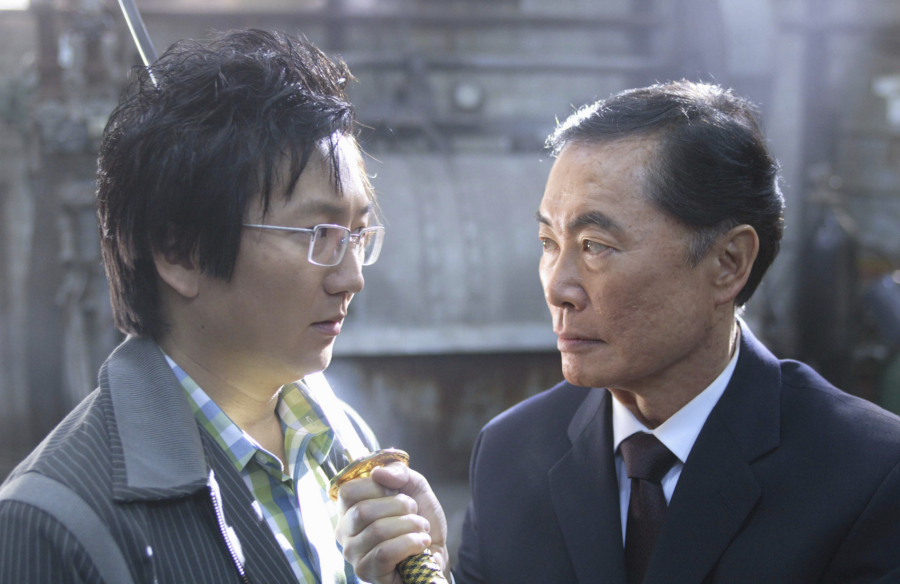
Believe it or not, the turn of the century was even better for George Takei. He was involved in over 50 projects that ran the gambit. He was in feature films, on TV series, and he provided the voice for animated series as well as video games. All of this included films like The Great Buck Howard, Ninja Cheerleaders, You Don’t Mess with the Zohan, and The Pool Boys.
It also included TV series such as The Chronicle, Son of the Beach, Watching Ellie, Scrubs, Malcolm in the Middle, Will & Grace, Psych, and Cory in the House. His animated work included Mulan II, Hey Arnold!, The Brak Show, Jackie Chan Adventures, and Samurai Jack while his video game vocals went to projects like Freelancer, Star Trek: Shattered Universe, Pain, and Command & Conquer: Red Alert 3.
One of the big series that George Takei was part of was the hit NBC show, Heroes. From 2007-2010, he appeared in 12 episodes as Kaito Nakamura, the father of one of the show’s main characters, Hiro Nakamura (played by Masi Oka). Hiro had the ability to travel through time and was also a massive Star Trek fan.
It is hard to say that George Takei’s career began to slow down as the 2010s took over because it didn’t. This was another decade that saw George continue to work in bunches as he even topped the 2000s by appearing in over 60 projects. If it ain’t broke, don’t fix it and this is exactly how George went about the 2010s.
More voice work, more TV series, and more video games are what kept George Takei busy. While he was seen on TV series such as The New Normal, Lost Girl, Hot in Cleveland, Fresh Off the Boat, and The Terror, his biggest series was the two seasons he spent on Supah Ninjas. In this series, he played Grandfather, to high school student Mike Fukanaga (Ryan Potter) who, along with his two high school friends Owen Reynolds (Carlos Knight) and Amanda McKay (Gracie Dzienny), learn to become ninjas with the help of Grandfather.
George Takei hit the ground running as the 2020s began. At age 83, George continued to work and work a lot. Love Monster was a big get for George as he lent his voice for 26 episodes of the animated children’s series. He was also heard in series such as Jellystone, Hit-Monkey, Elena of Avalor, Star Wars: Visions, Paws of Fury: The Legend of Hank, and He-Man and the Masters of the Universe.
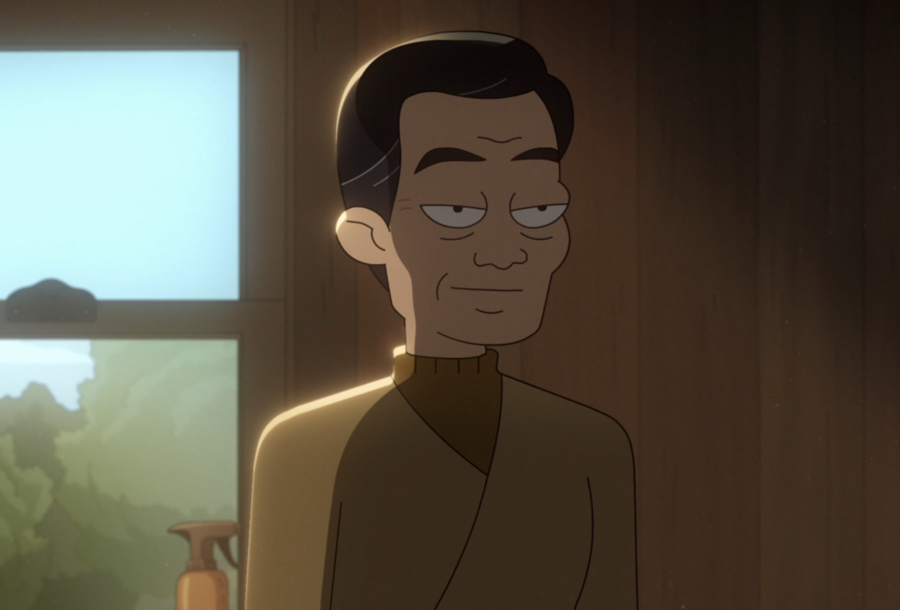
The biggest project George was part of just came to him recently and it was for an episode of Star Trek: Lower Decks, where he lent his voice by returning to the character of Hikaru Sulu.
Now, at the age of 85, it does not appear that George Takei has any intention of slowing down. His distinctive voice continues to get him great voice work and he has no problem getting in front of the camera from time to time. If he could only work things out with William Shatner.
THE ORIGIN OF GEORGE TAKEI’S “OH MY” CATCHPHRASE
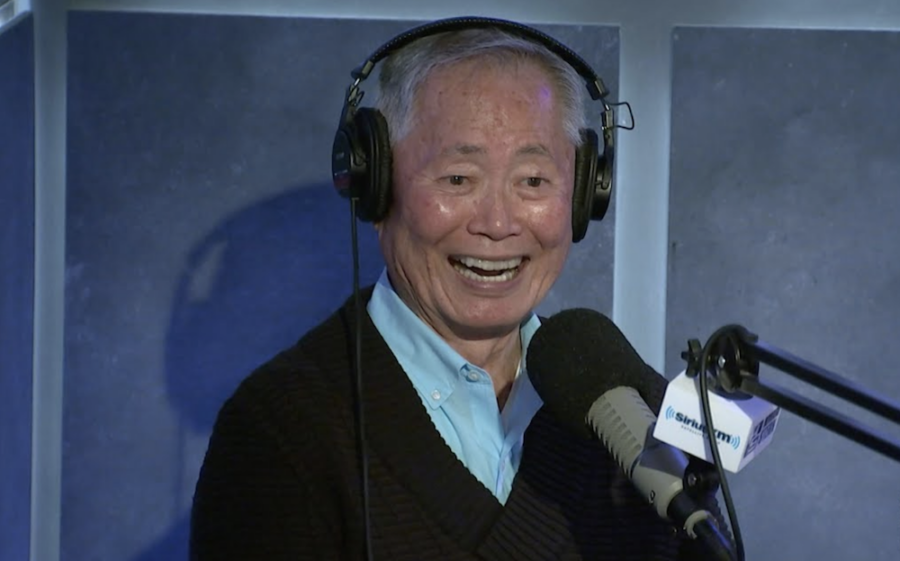
There have been a number of things throughout the years and long career of George Takei that have stuck around. Obviously, his role as Sulu is what he is best known for, and he also has the feud with William Shatner that gets him ample playtime. But there is one more thing that George is well-known for, and he can thank shock jock, Howard Stern, for that.
It is his famous catchphrase, “Oh my.” Contrary to popular belief, this catchphrase did not start with Star Trek, but instead, it came many years later when George Takei was asked to be a guest on Stern’s radio show. Most of you are aware of Stern’s schtick and just how rude, crude, and lewd he can be; unfortunately, George was not aware of it when he agreed to appear.
As George tells it, he was sitting in the waiting room to go onto the show and as he was waiting, the broadcast could be heard. The more he heard, the more he didn’t like, so he turned to another one of the guests sitting next to him and said they should put something else on because what he was listening to was a “disgusting, vile conversation.” The girl sitting next to him then proceeded to inform him that this was the show he was getting ready to appear on.
The girl barely got those words out of her mouth when the receptionist appeared to take George to the set. When he got there, he got his first look at the wild-haired Stern. George greeted him with “Good morning,” to which Stern said to him, “You have a deep voice. A voice like that must have a big dong below.” George then says he asked Stern, “Are we on the air?” to which Stern responded with “Yep.” George’s only response was, “Oh my.”
George Takei says now, Stern has his voice on tape and whenever a guest says or does something outrageous, Stern will push a button and George’s voice calls out, “Oh my.” It helped make George even more famous than he already was. You can see George Takei explains this whole thing to Graham Norton below.
HE HAS BEEN HEAVILY INVOLVED WITH POLITICS
In the early ’70s, George Takei began to dabble in politics. After being an alternate delegate from California in the 1972 Democratic National Convention, George ran for a Los Angeles City Council seat in 1973, finishing second. After finishing second, then Los Angeles Mayor Tom Bradley appointed George to the Southern California Rapid Transit District board of directors, making him part of the team that was planning the LA subway system.
George held on to this position from 1973 through 1984 and was even called in off the set from the film, Star Trek: The Motion Picture, so he could cast the tie-breaking vote for the subway system.
In 1986, George Takei began his campaign to become the District 46 California State Assemblyman. This attempt was thwarted before it could really get going, as his opponent challenged George being shown on Star Trek repeats, which went against the FCC’s Fairness Doctrine “equal time” regulation. Because of this, George pulled himself out of the running.
Throughout the years, George Takei has never been shy about his position on any topic. He has released PSAs (real ones) taking on school board vice presidents, calling one (Clint McCance) a “douchebag” for the homophobic comments McCance made when he said he “enjoys the fact that [gay people] give each other AIDS and die,” then went on to encourage gay people to commit suicide. McCance even said at the time that if he found out his children were gay that he would disown them.
George Takei’s eventual PSA response caused McCance’s resignation from his school board position and handed George some much-deserved recognition for the work he did in bringing down McCance. This wasn’t the only fight that George would take up.
In 2011, George Takei went after a Tennessee State Legislature bill that was written to prevent teachers or students to use any language that would allude to the existence of homosexuality. In the PSA George released for that cause, he offered up his name, telling people instead of using the word “gay,” they could substitute his name instead. For example, instead of “gay marriage,” they could use “Takei marriage.”
Where there is a cause, there just might be George Takei fighting for it. He has taken on Donald Trump when Trump made the call to ban Muslim travel throughout the United States. After Trump was inaugurated, Carl Higbie came out saying that the internment of Japanese Americans during the Second World War was the historical precedent that should allow for Muslims to be registered.
This prompted George to come out blasting, saying Higbie’s comments were very “dangerous” and that any registration of a certain group of people “is a prelude to internment.”
HE LOVES EVERYTHING BRITISH
They are called Anglophiles and George Takei is proud to be one. For those who aren’t aware of what an Anglophile is, they are people who love everything to do with England.
About this, George penned on his own personal website, “Those who know me know that I am an inconvertible Anglophile – or more broadly, a Britanophile, which includes my affection for Scotland and Wales as well. I love things British. My car is British. My wardrobe, to a good extent, is British. I even love the food in London – I think British food has shaken its prevailing perception as indigestible and become quite wonderful. I try to get to Britain for holidays as often as I can. I love things British.”
GEORGE TAKEI IS A PUBLISHED AUTHOR
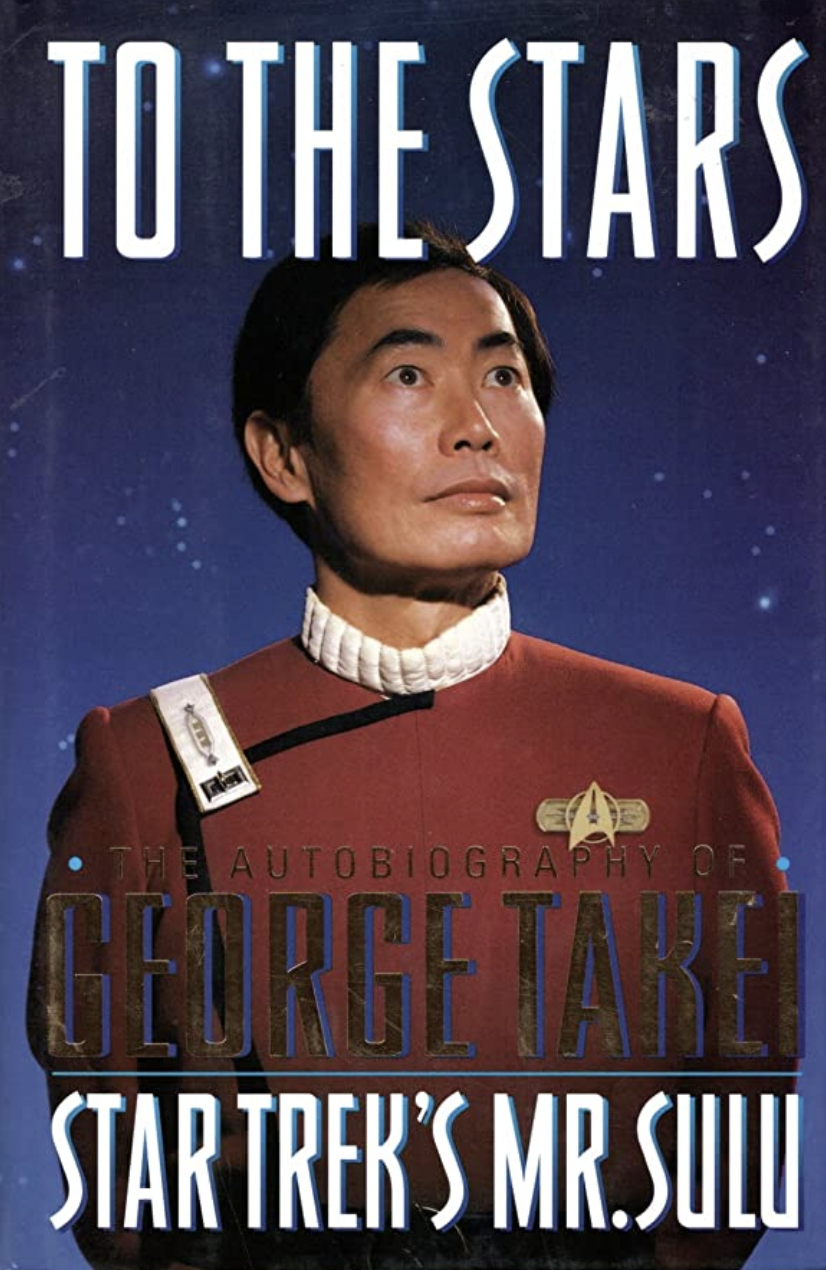
It shouldn’t surprise you that not only is George Takei a fine actor, but he is also a fantastic writer. To date, George has written five books, his first in 1979 titled, Mirror Friend, Mirror Foe. His second book came out in 1994 and it was called, To the Stars: The Autobiography of George Takei.
George followed those two up with Oh Myyy! (There Goes the Internet) in 2012, Lions and Tigers and Bears: The Internet Strikes Back (Life, the Internet and Everything) in 2013, and his latest in 2019 titled, They Called Us Enemy.
GEORGE TAKEI IS VERY ACTIVE ON TWITTER AND INSTAGRAM
George Takei has made sure that he won’t lose touch with his fan base. He is very active on social media with his Twitter and Instagram accounts gaining considerable traction.
On Twitter, he has more than 3.4 million followers and on Instagram the number is sitting right around 1.4 million. For Twitter, his feed is typically responding the various entertainment and political news of the day stories.
He isn’t shy about posting anything and everything controversial or things he is firmly against or supports. As an example, his latest is a video covering all the things Florida Governor Ron DeSantis has said or done, with the Takei caption, “Absolutely deplorable.”
Is it okay to call George Takei a screen legend? He has given Trekkies reason to do so and honestly, you needn’t be a Trekkie to appreciate the longevity of his career or the impact he has tried to make when he isn’t on screen.
Unfortunately, it doesn’t appear that either he or William Shatner will bury the hatchet, unless it is in each other, which ultimately may be a regret for both of them.
Latest George Takei News
George Takei Mocks William Shatner For Going To Space, Calls Him A Guinea Pig
While everyone else is congratulating William Shatner, George Takei is mocking his former co-star!
Star Trek Movies Modeling Themselves After DC Films?
The Star Trek movie makers are taking a page from DC’s book.
See Marvel’s Hit-Monkey Trailer About a Monkey Hitman
Check out this hilarious trailer about the monkey hitman, Hit-Monkey!
William Shatner Is Ready To Return As Captain Kirk For The 2023 Star Trek Movie
William Shatner is ready to return to the role of Captain Kirk.
William Shatner And George Takei Hate Each Other More Than Ever
William Shatner and George Takei have set their phasers to “kill.”
